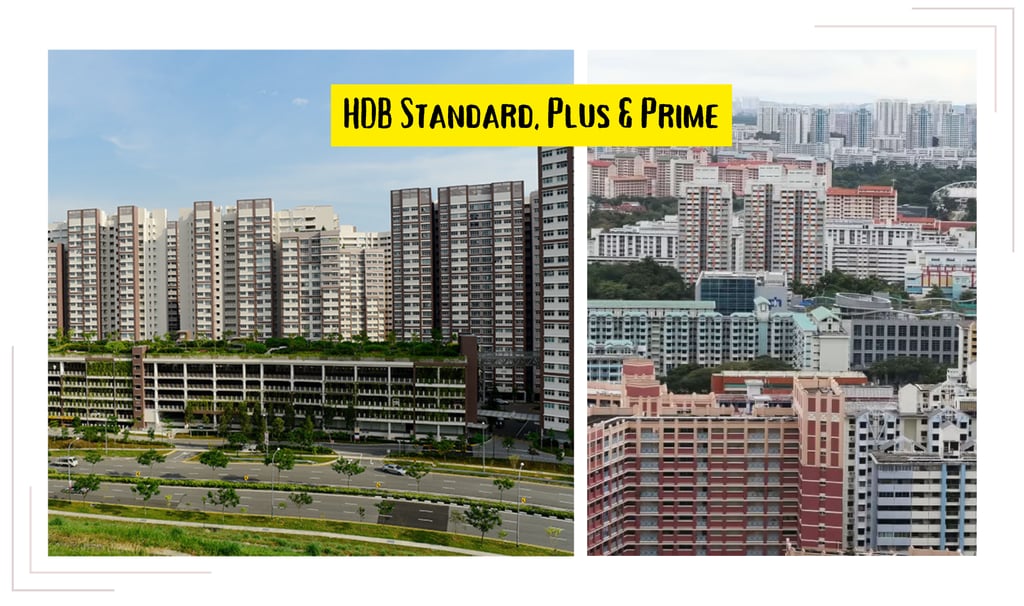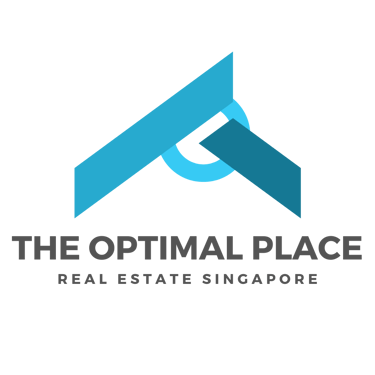HDB Standard, Plus & Prime review
HDB
10/9/20246 min read


HDB’s New BTO Models: Standard, Plus, and Prime—A Comprehensive Analysis and Market Impact
The Housing & Development Board (HDB) is a cornerstone of Singapore’s housing market, providing affordable homes to the majority of the population. In recent years, HDB introduced a new framework for Build-to-Order (BTO) flats, categorizing them into Standard, Plus, and Prime models. Each of these categories offers a unique set of pricing, features, and resale restrictions, aiming to cater to diverse buyer needs while managing the affordability of housing in different parts of the city.
This article explores the details of each BTO model, their intended market segments, and the potential long-term impacts on Singapore’s HDB resale market.
Understanding the BTO Models: Standard, Plus, and Prime
1. Standard BTO Model: The Classic Choice
- Overview: Standard BTO flats represent the traditional HDB offering. They are built in both mature and non-mature estates, providing essential amenities and a straightforward ownership structure. These flats are intended to meet the needs of most first-time buyers.
- Pricing and Restrictions: Standard BTOs are the most affordable among the three models. They come with a 5-year Minimum Occupation Period (MOP), after which owners are free to sell their flats on the open market without any additional restrictions.
- Appeal: Their lower price point and fewer restrictions make them ideal for buyers seeking affordability and flexibility. They are particularly popular among young couples or first-time buyers who want access to basic amenities without being locked into a long-term commitment. Standard BTO flats are typically sought in a variety of locations, from suburban towns to well-established mature estates.
2. Plus BTO Model: Bridging the Gap
- Overview: The new Plus model is designed to provide a middle ground between Standard and Prime models. Plus flats are located in choice sites within mature estates, offering a balance of convenience and affordability, especially for those who want access to better infrastructure without the premium price tag of Prime units.
- Pricing and Restrictions: Plus flats are priced higher than Standard units due to their better location but lower than Prime units. They come with stricter conditions, such as a 10-year MOP, which aims to deter short-term speculation. The longer MOP ensures that buyers are committed to living in the flat for a more extended period before being able to sell it on the resale market.
- Appeal: These flats attract buyers who desire a more central location with access to established amenities like schools, shopping centers, and MRT stations but are willing to accept some limitations for the convenience. However, the longer MOP and resale restrictions could mean a smaller pool of potential buyers when these units eventually enter the resale market.
3. Prime BTO Model: Top Tier with Restrictions
- Overview: Prime BTO flats are located in the most sought-after areas, such as the city center or estates close to the Central Business District (CBD). These flats cater to buyers who place a high value on proximity to transport hubs, shopping districts, and recreational spaces.
- Pricing and Restrictions: Due to their prime locations, these flats come with a higher initial price, even with enhanced subsidies. Prime BTOs also come with a 10-year MOP and tighter resale conditions, such as income ceilings for potential buyers. These restrictions are in place to ensure that these centrally located homes remain affordable and accessible to Singaporeans rather than becoming speculative investments.
- Appeal: Prime flats are ideal for those who wish to reside in high-demand areas and are committed to a long-term stay. However, the added resale conditions can make it more challenging to sell these flats after the MOP, potentially impacting their resale value and appreciation potential despite their desirable locations.
Reviewing the Models: A Balanced Perspective
Each BTO model is tailored to different buyer profiles and needs. The Standard model suits those who prioritize affordability and greater flexibility in selling their property after the MOP. The Plus model offers a balance, appealing to families looking for convenience in a central location but willing to accept a longer stay. Meanwhile, the Prime model provides proximity to high-demand areas but requires a more extended commitment due to resale restrictions.
From a policy standpoint, the introduction of the Plus and Prime models reflects the government’s effort to ensure housing affordability in high-demand locations while managing market stability. By adding layers of restrictions, the HDB aims to discourage speculative buying and ensure that these homes serve genuine homeowners over the long term
Potential Impact on the HDB Resale Market
The shift to the new BTO models is likely to change buyer behavior and influence the dynamics of the HDB resale market over time. Here’s how these changes could play out:
1. Increased Demand for Standard Resale Flats
- With the Plus and Prime models imposing longer MOPs (10 years) and stricter resale criteria, many buyers may prefer Standard resale flats to avoid these limitations. The Standard flats' shorter MOP and fewer resale restrictions make them more attractive for those who want flexibility, especially if they plan to upgrade to private properties. This could lead to increased demand and potential price appreciation for Standard resale flats in established estates like Tampines, Queenstown, and Toa Payoh.
2. Limited Resale Market for Plus and Prime Flats
- The stringent resale conditions of Plus and Prime models mean that these flats may see a smaller pool of potential buyers after the MOP. For example, income ceilings for Prime flat buyers could limit the market, slowing down appreciation even though the location is desirable. This could result in slower resale activity and moderate capital gains for Plus and Prime homeowners, especially compared to the more flexible Standard flats.
3. Segmentation in Property Values
- The introduction of these three BTO categories could lead to greater differentiation in the HDB resale market. Prime flats might set a new ceiling for resale prices in centrally located areas, while Plus and Standard flats in mature estates hold steady due to their accessibility and price advantages. As a result, the resale market could become more segmented, with prices varying significantly based on the BTO model and location.
4. Impact on Upgraders and First-Time Buyers
- The longer MOPs of Plus and Prime flats could affect the decisions of those looking to upgrade to private properties. Homeowners in these models will need to plan carefully since the longer MOP restricts their ability to sell quickly. This might delay their entry into the private housing market, potentially slowing down the overall transition from public to private housing for some segments of the population.
5. Future Economic Conditions and Their Impact
- As with any property market, the long-term effect of these new models will depend on broader economic conditions. In a booming economy, demand for properties in prime locations may remain robust, even with restrictions. Conversely, in a slower market, the resale limitations might become a more significant deterrent, potentially causing stagnation in the resale values of Plus and Prime flats.
A Possible Scenario: Singapore’s HDB Market in 2044
Looking 20 years ahead, the housing market in Singapore could become more segmented due to the impact of these BTO models. Here’s a potential scenario and how it might shape the HDB market:
1. Demand for Flexibility: The new generation of buyers might prioritize flexibility, leading to continued demand for Standard flats due to their shorter MOP and fewer restrictions. This could drive up resale values for these units in mature estates, as buyers seek options that allow easier transitions into private housing.
2. Challenges for Prime Flat Owners: The resale market for Prime units could see slower growth due to limited buyer eligibility, especially during economic downturns. While these flats retain value due to location, the resale restrictions could lead to slower appreciation, making it harder for owners to upgrade to private properties or use their flats for retirement funding.
3. Rise in Rental Markets: As resale becomes more difficult for Plus and Prime owners, many may turn to the rental market for additional income, especially after completing the MOP. This could lead to increased rental yields in central areas, providing an alternative income source for these owners while waiting for more favorable resale conditions.
4. Maintenance and Rejuvenation of Older Estates: As Standard flats from the 1990s and 2000s age, more rejuvenation projects could be initiated, such as the Voluntary Early Redevelopment Scheme (VERS). These efforts can maintain the appeal of older flats, ensuring they remain competitive in the market.
Final Thoughts
The introduction of Standard, Plus, and Prime BTO models has reshaped the landscape of public housing in Singapore. Each model caters to different needs, offering varying levels of affordability, restrictions, and location benefits. While the Standard model continues to provide flexibility, Plus and Prime models aim to keep centrally located flats accessible, though with trade-offs in terms of resale potential.
For buyers, choosing the right BTO model means carefully considering long-term plans, whether for stable residence, rental income, or potential capital appreciation. As these models mature and hit the resale market, their impact on Singapore's property landscape will become more apparent, shaping the opportunities available for future generations.
Looking to Buy or Sell your home? Have some questions for us?
Leave us a message and we will be in touch with you shortly.
